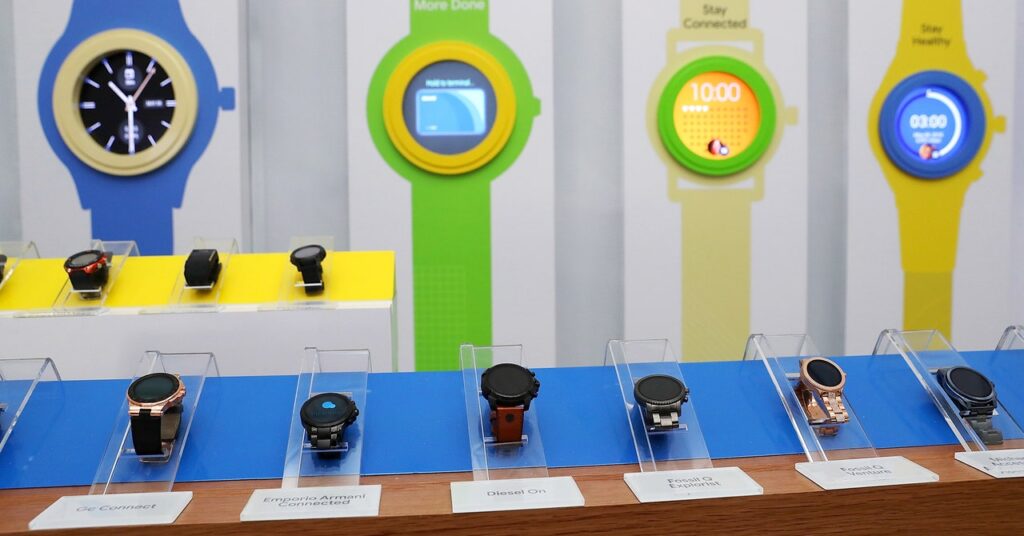Google Is Finally Taking Smartwatches Seriously
Wear OS—now just dubbed Wear—is seeing its biggest update yet, with integrations from Fitbit and a new partnership with Samsung….


Another big reason Google lags behind the smartwatch competition is its lackluster health and fitness portfolio. In recent years, Apple has added electrocardiogram (ECG) and blood oxygen saturation (SpO2) measurements into its watches, and rumors suggest blood glucose monitoring will be the next new health feature in the upcoming Series 7 smartwatch.
But Google now owns Fitbit, and it’s putting the wearable company’s prowess in this area to use. Your next Google-powered smartwatch will come with many of the same features found on Fitbit devices right now, such as health tracking and workout progress, as well as those on-wrist celebrations that provide extra motivation. Fitbit will also produce premium smartwatches running Wear in the future.
However, features like ECG and SpO2 aren’t baked into Wear natively. “Any of those more specialized functionalities like the ECG will be up to the manufacturer,” Kilburn says. “We’ve enabled them to bring that kind of innovation to the marketplace, so it would be up to the specific device launch.” Both Samsung and Fitbit offer SpO2 and ECG tracking on existing watches and trackers, so it’s likely (though not confirmed) that those functions will still be present when their respective Wear watches debut later.
Kilburn also says Google has also worked with Fitbit (and Samsung) to rebuild the underlying health and fitness framework in Wear to make activity tracking more accurate, and to make it easier for developers to gather and use the tracking data. “In the past, they’d have to go all over the operating system to collect the different pieces of data, but we’re bringing them all into one framework they’ll be able to use.”
Since Fitbit’s app will also land on Wear, future Wear smartwatch owners can choose whether to use Fitbit’s app or Google Fit to track fitness data. Kilburn couldn’t comment on future plans, but says anyone who chooses a Fitbit Wear smartwatch will “continue to have a great experience” with Fitbit.
As for future updates to Wear, Kilburn didn’t say if Google will follow a yearly cycle of updates like it does with Android, or how Apple debuts a new watchOS version every year. Instead, expect a more frequent cadence of updates.
Playing Catch Up
It should be noted that while Google announced that it closed its Fitbit acquisition in January following approval from the European Union’s antitrust commission—with conditions that Google cannot use the health data of Fitbit users for advertising and has to keep Fitbit and Google data separate—it doesn’t mean the US Department of Justice has automatically signed off on it.
A Google spokesperson says it complied with the department’s review and the “agreed upon waiting period expired without their objection,” but the DOJ’s review is still ongoing, and it has enforcement tools it can utilize if it finds the acquisition harms competition.
Nevertheless, even though it’s been seven years since Google launched its smartwatch platform, the company doesn’t have much to show for it. As of the fourth quarter of 2020, Wear OS counts for a measly 2.7 percent of the market, according to analysis firm Counterpoint Research. Apple saw a 19 percent growth in global smartwatch sales in the same period and now commands 40 percent of the market share. Samsung jumped to 10 percent market share, and Fitbit was stagnant at 7 percent. Google now owns that 7 percent, but it still needs Samsung to grow the Wear platform.
“Apple obviously dominates, but Samsung is the clear number two player,” says Jeff Fieldhack, research director at Counterpoint Research. “They have brand recognition. They sell by far the most connected devices, which is kind of the trend also—cellular connectivity. By having a modem in it, you can have a standalone device and don’t need your companion smartphone.”




